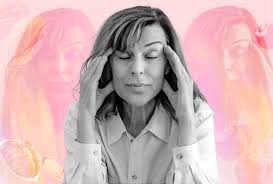Share This Article
Some women appear to sail through menopause with ease, transforming into nonfertile yet still sexy and sophisticated women of a certain age without breaking a sweat. For the vast majority, however, the experience is rockier: An estimated 80% have at least one menopausal symptom, which can range from occasionally waking up drenched in sweat to daily hot flashes that surprise you during important client meetings and dinner with your fiancé. And did we mention the brain fog, loss of libido, vaginal dryness, insomnia and moodiness?
If you’re unlucky enough to have some—or several—of these problems, you can be fairly sure that hormonal fluctuations are to blame. Oftentimes, the worst menopausal symptoms occur during perimenopause, aka the change before the change. Menopause (the complete absence of your periods) occurs, on average, at age 52, but the transition that precedes it can last for two to eight years.
During perimenopause, your ovaries start producing less estrogen, but it’s not a slow and steady decline. Instead, levels of estrogen and progesterone (another hormone produced by the ovaries) tend to bounce around erratically before eventually plummeting. “That rollercoaster is really what’s giving you mood swings, hot flashes and night sweats,” says Elizabeth Ward, M.S., RDN, co-author of The Menopause Diet Plan: A Natural Guide to Managing Hormones, Health, and Happiness. “Some women report rage. Others develop brain fog and wonder if they’re starting to have dementia, though most of the time they’re not.”
If you’ve told your doctor that you’re struggling, they might have offered to write you a prescription for hormone therapy. Indeed, hormones are the most effective treatment for common menopause symptoms, and the benefits outweigh potential risks for many people. Whether you opt for hormone therapy or not, this transition is also a good time to take a closer look at your diet and consider making some tweaks.



